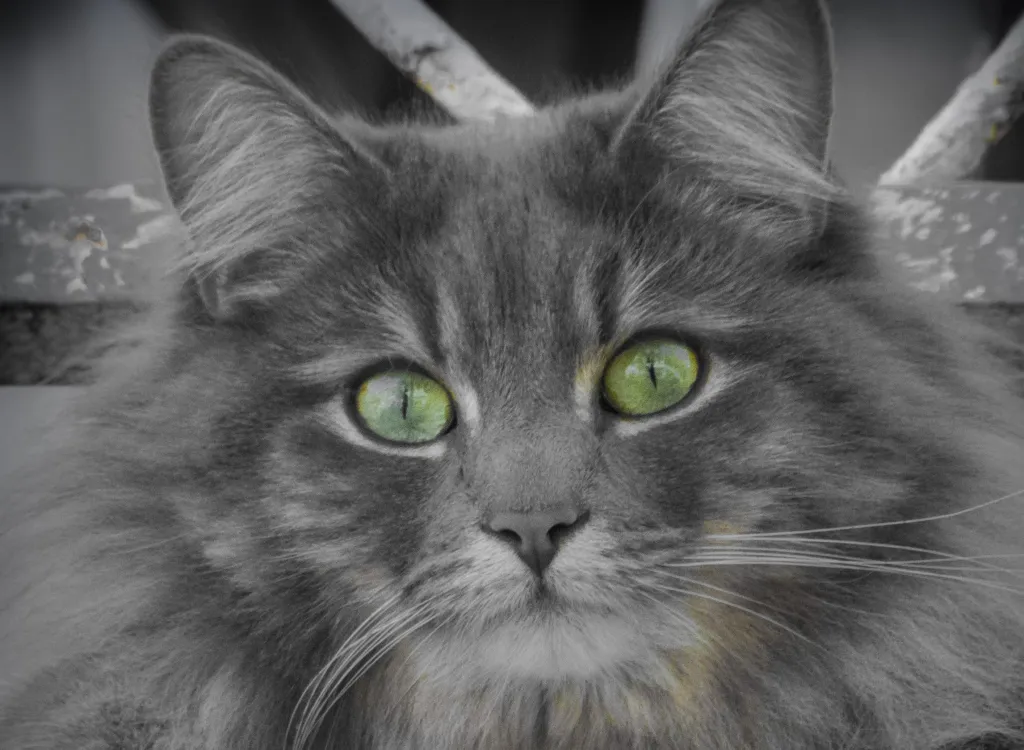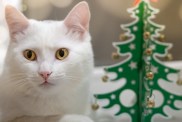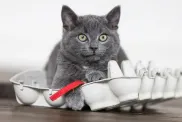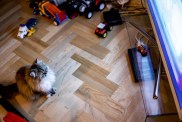The Nebelung cat, a captivating and elegant breed, came from the long-haired Russian Blue lineage. The Nebelung showcases a fluffy, shimmering silver-blue coat, which gives it an ethereal and mist-like quality. The name “Nebelung” means creature of the mist, derived from the German word “Nebel,” meaning mist or fog, perfectly capturing the breed’s enchanting aura.
Known for their intelligence and grace, Nebelung cats make cherished companions for those seeking a feline friend with a calm and loving nature. These cats often form strong bonds with their human families and display a shy but loving demeanor. With their bright green eyes, tufted ears, and silky fur, Nebelungs are not only a pleasure to behold but also a testament to the careful breeding that has gone into their development.
When considering a Nebelung, it’s advisable to prioritize adopting from rescue organizations or shelters to provide a loving home to a cat in need. However, if you decide to purchase a Nebelung kitten, it’s crucial to choose a reputable breeder. Conduct thorough research to ensure that the breeder follows ethical practices and prioritizes the well-being of their cats. Reputable Nebelung breeders prioritize the health and temperament of their cats, conduct necessary health screenings, and provide a nurturing environment for the kitties. This active approach ensures that you bring home a healthy and happy kitty while discouraging unethical breeding practices.
Quick Facts
- Origin: United States
- Size: Medium
- Breed Group: Semi-longhair
- Lifespan: 11-16 years
- Coat: Medium-long, soft, and silky, with a distinctive blue or silver-tipped coat
- Temperament: Shy at first, intelligent, affectionate, playful, and easygoing
- Exercise Needs: Moderate
- Training: Easy to train
- Grooming: Weekly brushing
- Health: Generally healthy
- A Nebelung is one of the options for a Patronus on Wizarding World, a Harry Potter website.
- The names Siegfried and Brunhilde, the original Nebelung cats, were chosen from a Wagner Opera entitled, “The Ring of Nibelung.”
- The Nebelung is often described as “dog-like,” and can even learn to walk on a leash.
Nebelung Pictures
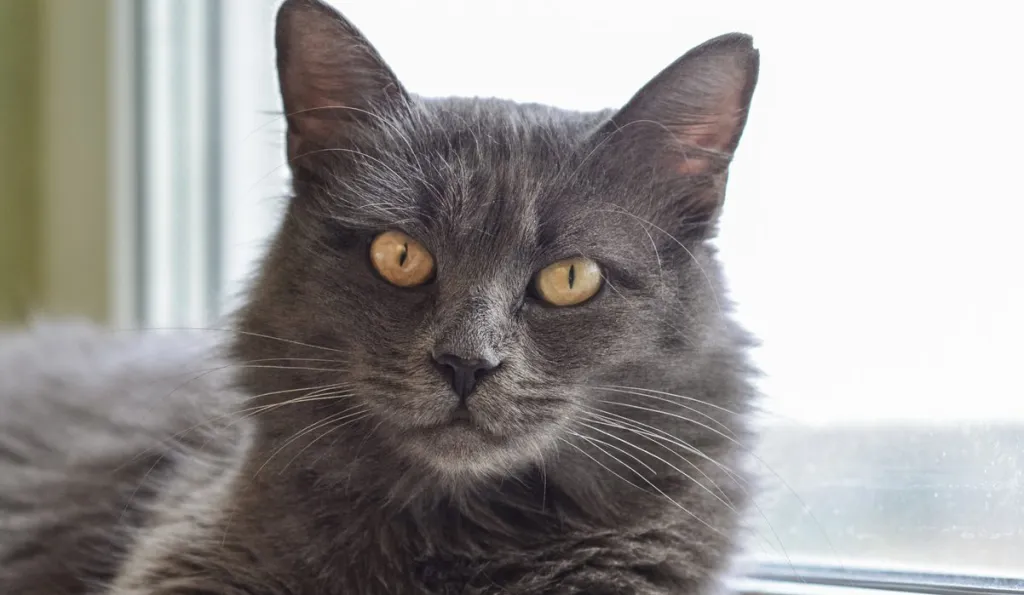
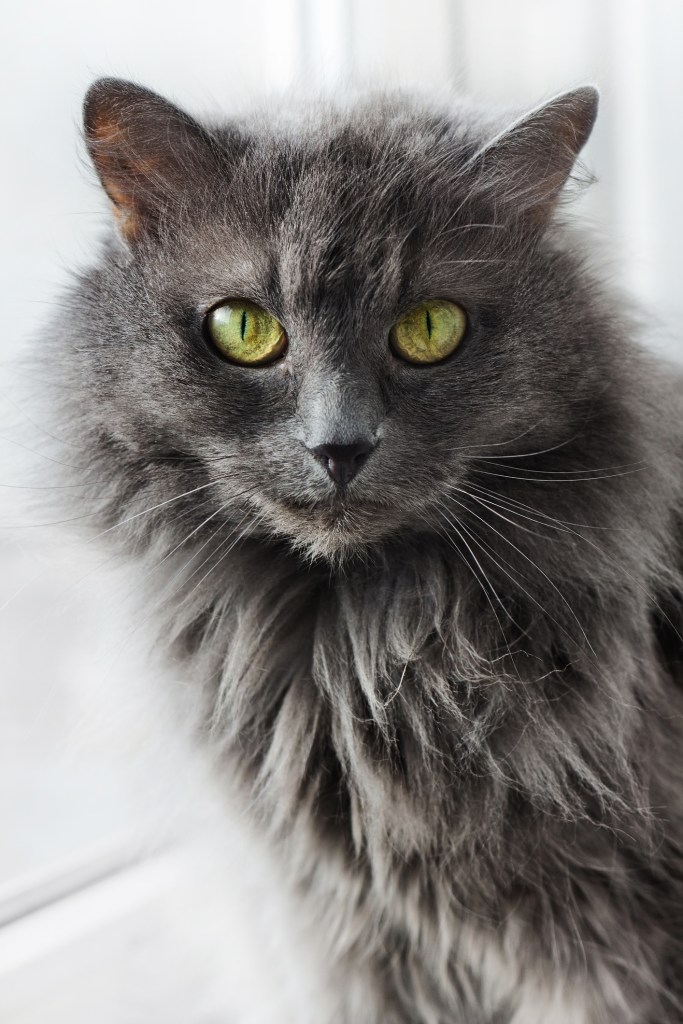
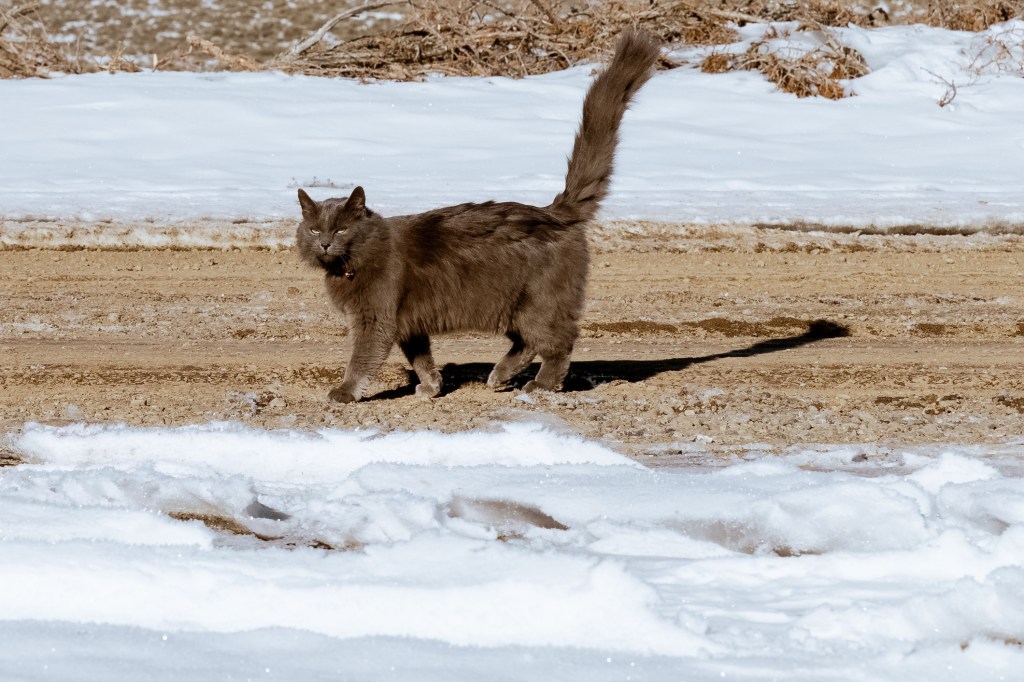
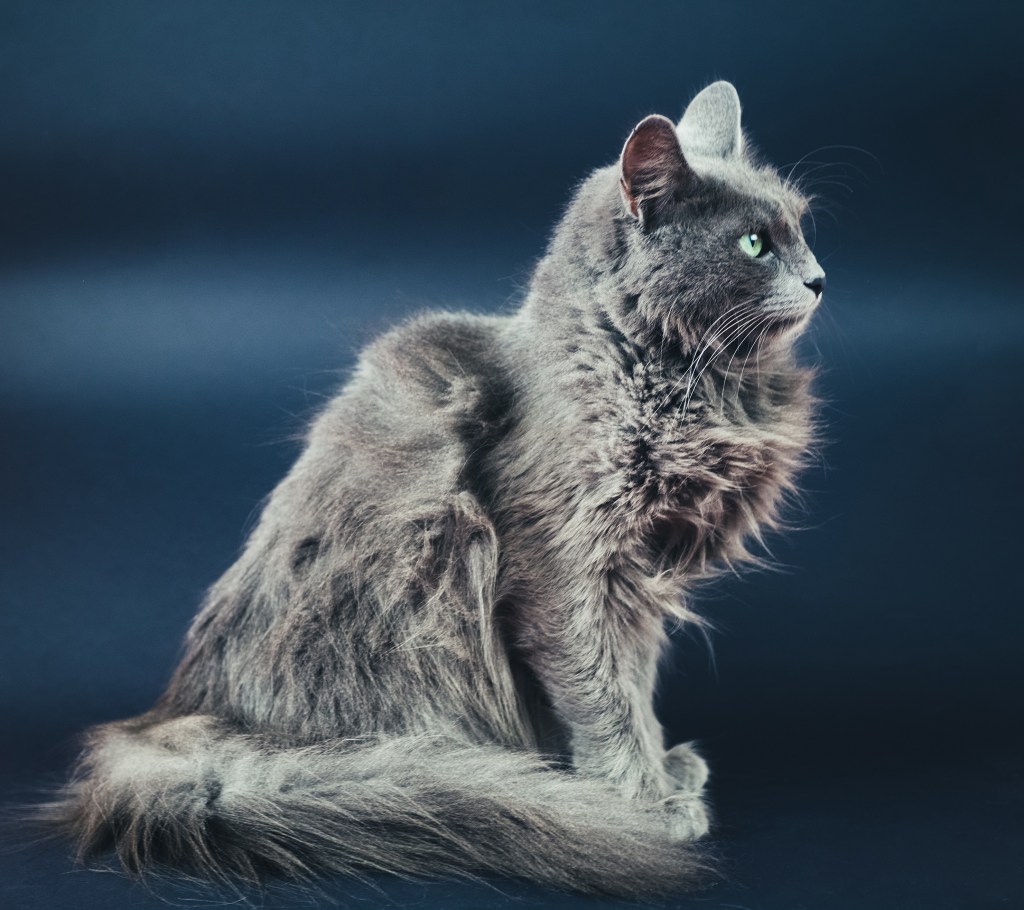
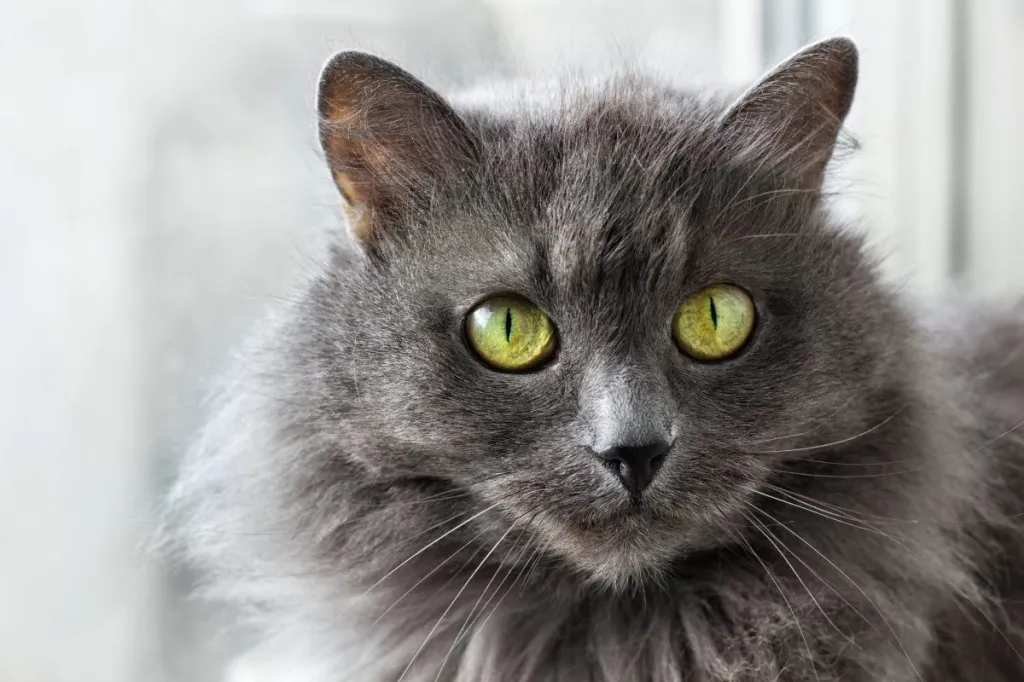
-
Affectionate with Family
Some cat breeds are typically independent and aloof, even if they’ve been raised by the same person since kittenhood; others bond closely to one person and are indifferent to everyone else; and some shower the whole family with affection. Breed isn’t the only factor that goes into affection levels; cats who were raised inside a home with people around feel more comfortable with humans and bond more easily.

See Cats Less Affectionate with Family -
Amount of Shedding
If you’re going to share your home with a cat, you’ll need to deal with some level of cat hair on your clothes and in your house. However, shedding does vary among the breeds. If you’re a neatnik, you’ll need to either pick a low-shedding breed or relax your standards. This furniture cover can make it easier to clean up cat hair and keep it off your sofa!
-
General Health
Due to poor breeding practices, some breeds are prone to certain genetic health problems. This doesn’t mean that every cat of that breed will develop those diseases; it just means that they’re at an increased risk. If you’re looking only for purebred cats or kittens, it’s a good idea to find out which genetic illnesses are common to the breed you’re interested in.
-
Potential for Playfulness
Some cats are perpetual kittens—full of energy and mischief—while others are more serious and sedate. Although a playful kitten sounds endearing, consider how many games of chase the mouse-toy you want to play each day, and whether you have kids or other animals who can stand in as playmates. A classic wand cat toy like this one is perfect for playful felines!
-
Tendency to Vocalize
Some breeds sound off more often than others with meows, yowls, and chattering. When choosing a breed, think about how the cat vocalizes and how often. If constant “conversation” drives you crazy, consider a kitty less likely to chat.
-
Kid-Friendly
Being tolerant of children, sturdy enough to handle the heavy-handed pets and hugs they can dish out, and having a nonchalant attitude toward running, screaming youngsters are all traits that make a kid-friendly cat. Our ratings are generalizations, and they’re not a guarantee of how any breed or individual cat will behave; cats from any breed can be good with children based on their past experiences and personality.
-
Friendly Toward Strangers
Stranger-friendly cats will greet guests with a curious glance or a playful approach; others are shy or indifferent, perhaps even hiding under furniture or skedaddling to another room. However, no matter what the breed, a cat who was exposed to lots of different types, ages, sizes, and shapes of people as a kitten will respond better to strangers as an adult.
-
Easy to Groom
Some breeds require very little in the way of grooming; others require regular brushing to stay clean and healthy. Consider whether you have the time and patience for a cat who needs daily brushing. You should definitely pick up this awesome de-shedding tool for cats of any hair length!
-
Intelligence
Some cat breeds are reputed to be smarter than others. But all cats, if deprived the mental stimulation they need, will make their own busy work. Interactive cat toys are a good way to give a cat a brain workout and keep them out of mischief. This scratcher cat toy can keep your smart kitty busy even when you’re not home!
-
Pet Friendly
Friendliness toward other household animals and friendliness toward humans are two completely different things. Some cats are more likely than others to be accepting of other pets in the home.
Nebelung History
The Nebelung cat breed was developed by Cora Cobb of the Nebelheim Cattery. Cobb was inspired by a kitten named Siegfried, the only longhaired blue kitten in a litter fathered by a longhaired black cat and born to a black domestic shorthair named Elsa. A second litter produced a female longhaired blue kitten whom Cobb named Brunhilde. Siegfried and Brunhilde became the foundation of a new breeding program and produced their first litter in 1986.
Russian Blues who carried the gene for long hair were imported from eastern Europe in the late 1980s and contributed to the development of the breed. The International Cat Association gave the cats New Breed status in 1987 and full recognition in 1997. Nebelungs can be outcrossed to Russian Blues. The Nebelung is also recognized by the Cat Fanciers Federation and the Traditional Cat Association.
Nebelung Size
The Nebelung is a medium-sized cat with a long body.
They tend to weigh in at seven to 15 pounds with females generally being smaller than males. That said, some Nebelungs may fall outside of that range.
Nebelung Personality
The Nebelung has a reputation as a gentle, quiet cat, somewhat shy, but don’t get the wrong idea. This cat may have a reserved nature, but they love to play–being especially fond of retrieving–and enjoy jumping or climbing to high places where they can study people and situations at their leisure before making up their mind about whether they want to get involved.
Guests will not receive this cat’s immediate attention and may never see them unless they decide the humans are worthy of their notice, but toward family members, especially their favored person, the Nebelung is ever loyal, following them through the house and even riding on a shoulder.
The Nebelung is a sensitive cat who doesn’t like to be ignored and will be hurt if they don’t receive the same amount of affection they give. Lack of attention can cause them to become anxious or fearful. While the Nebelung loves your company, they’re capable of entertaining themselves during the day while you are at work.
Unlike some active, intelligent breeds, they’re not destructive but move through the house with the lithe grace of a Russian ballerina. When you are at home, their subtle sense of humor and manual dexterity will never fail to entertain. Just make sure you laugh with them, not at them. They have a strong sense of self-worth and don’t like being made fun of.
This is a cat who does best in a quiet, stable environment. They don’t like change, and it’s especially important to them that meals arrive on time. Count on them to be a faithful alarm clock in the morning–not so you don’t miss work, but so they don’t miss a meal. If you take the time to develop a relationship with a Nebelung, your reward will be a deep bond with this loving cat.
Nebelung Health
Both pedigreed cats and mixed-breed cats have varying incidences of health problems that may be genetic in nature. The Nebelung is generally healthy, however. An owner’s main concern will probably be this cat’s hearty appetite, which can turn them from sleek to stout in no time.
- Obesity: Obesity in cats is a prevalent and concerning health issue that can have significant consequences on their overall well-being. Obesity is defined as an excess of body fat relative to body weight, and it can affect cats of all ages, breeds, and backgrounds. Several factors contribute to feline obesity, and understanding them is crucial for prevention and management.
Nebelung Care
The Nebelung’s long, dense coat should be combed twice a week to remove dead hair and distribute skin oils. Brush the teeth to prevent periodontal disease. Daily dental hygiene is best, but weekly teeth brushing is better than nothing. Trim the nails every couple of weeks. Wipe the corners of the eyes with a soft, damp cloth to remove any discharge. Use a separate area of the cloth for each eye so you don’t run the risk of spreading any infection.
Check the ears weekly. If they look dirty, wipe them out with a cotton ball or soft damp cloth moistened with a 50-50 mixture of cider vinegar and warm water. Avoid using cotton swabs, which can damage the interior of the ear.
Keep the Nebelung’s litter box spotlessly clean. They are very particular about bathroom hygiene, and a clean litter box will help to keep their coat clean, as well. It’s a good idea to keep a Nebelung as an indoor-only cat to protect them from catching diseases spread by other cats, suffering attacks by dogs or coyotes, and the other dangers that face cats who go outdoors, such as being hit by a car. Nebelungs who go outdoors also run the risk of being stolen by someone who would like to have such a beautiful cat without paying for one.
Nebelung Coat Color And Grooming
The Nebelung looks much like the elegant-yet-muscular Russian Blue, but with a thick, shimmering, medium-length coat. Their general appearance is that of a long, sturdy, well-muscled cat. The International Cat Association breed standard for the Nebelung calls for them to have a modified wedge-shaped head that is more pointed than rounded, although his long hair may give the head a rounded look. Large ears are wide at the base with pointed tips, and rich, deep-green eyes have a slightly oval shape and are set wide apart.
Kittens may have yellowish-green eyes, but by the time they are two years old they should have developed into the vivid green of maturity. The nose pad is charcoal gray. A long, slender neck sometimes looks shorter than it actually is because of the Nebelung’s dense fur. The body is what’s called semi-foreign, meaning it is moderate in shape, falling somewhere between the short, compact body of breeds such as Persians and the sleek angles of Oriental breeds such as the Siamese. It is athletic but not bulky, with a medium-boned body that is well proportioned.
Supporting the body are long, medium-boned legs set on medium-size, well-rounded oval paws with generous tufting between the toes. The Nebelung looks as if they’re walking on the balls of their feet. Their tail is at least as long as their body from shoulder blades to rear end, covered in fur that is longer than the body hair.
The Nebelung stands out for their luxurious coat and striking color. A medium-length double coat covers the body, increasing in length from the shoulder to the tail. Males have a distinct neck ruff, but females are not as well endowed. Behind the ears is feathering in a lighter shade of blue. Fur covering the back of the upper thighs gives the Nebelung the appearance of wearing pantaloons. The outer coat is fine and silky, topping an undercoat that is soft and downy. The coat typically does not develop fully until the cat is two years old. It is thicker, longer and softer in winter.
To the uninformed, the Nebelung might look gray, but in cat show terms, they are blue all the way to the roots. It’s ideal if the fur is silver-tipped, which makes the coat seem to glisten, but often silver tipping is noticeable only on the head and shoulders. Some Nebelung kittens are born with “ghost stripes,” a reminder of the tabby gene that all cats carry, even if it isn’t expressed in their coat, but these generally fade, leaving the cat with the solid blue coat of maturity.
Children And Other Pets
Nebelungs have a tolerant nature toward children who treat them kindly and respectfully, but they can be wary of younger children who pet them clumsily. Always supervise very young children when they want to pet the cat.
The Nebelung is accepting of other animals, including dogs, as long as they aren’t chased or menaced by them. Introduce pets slowly and in controlled circumstances to ensure that they learn to get along together.
Nebelung Rescue Groups
It may be hard to find a breed specific rescue for Nebelung cats because they are a somewhat rare. However, you may want to try shelters and rescues that cater to all types of cats, including Nebelungs, as well as your local shelter. Here are some nonprofit rescues you can try:
More Info For You
If you’re also looking for a dog, check out DogTime’s dog breed page!
